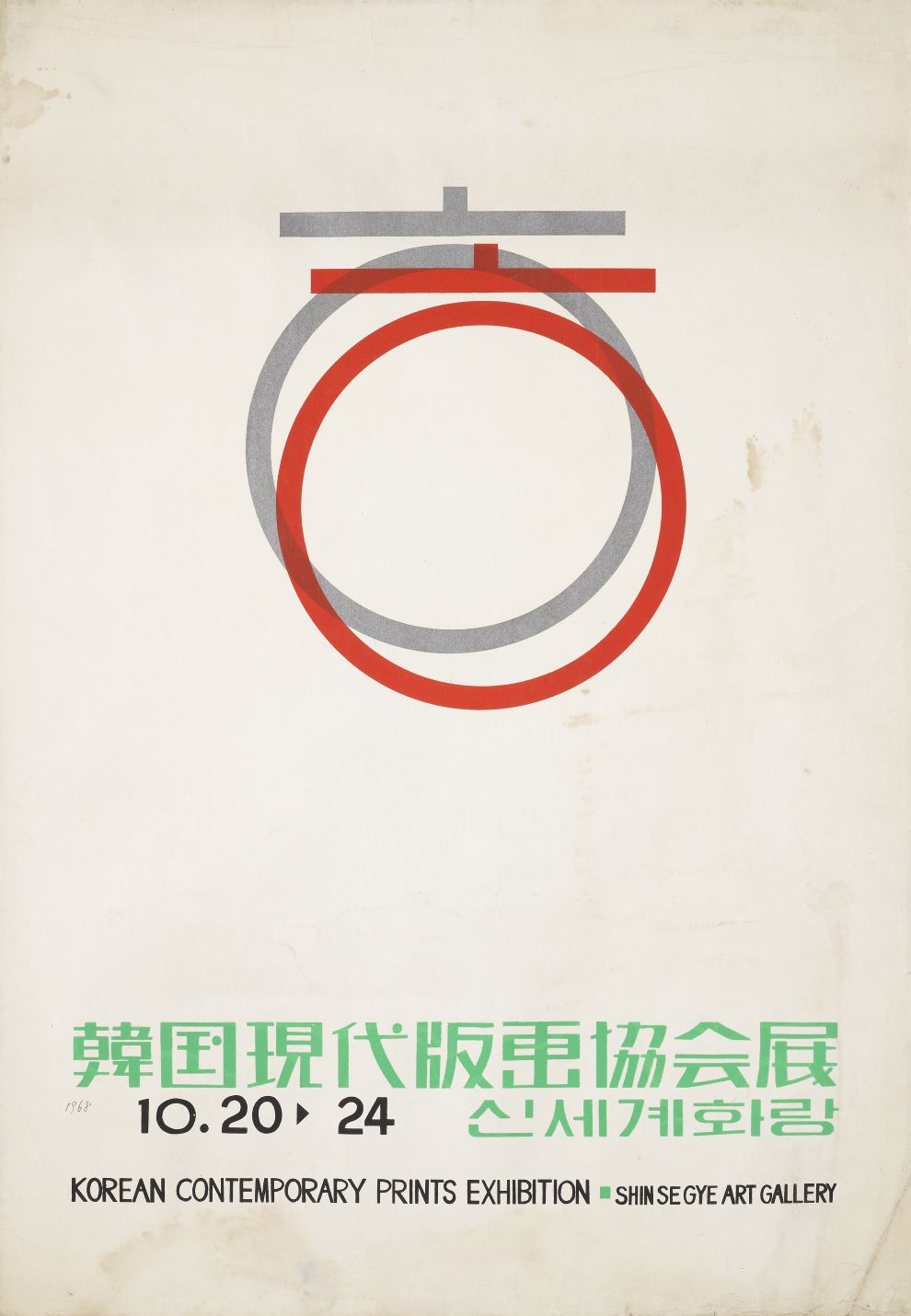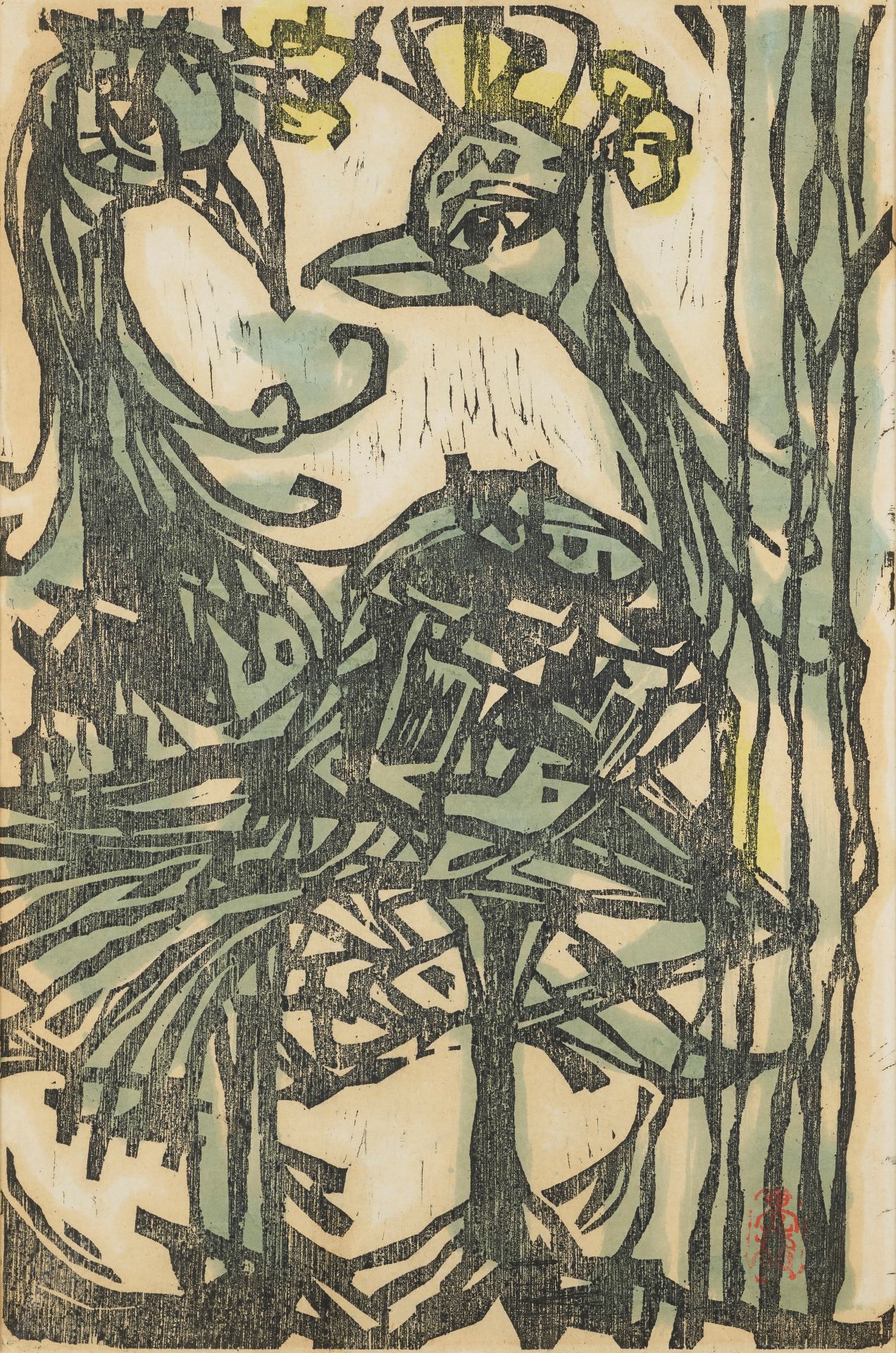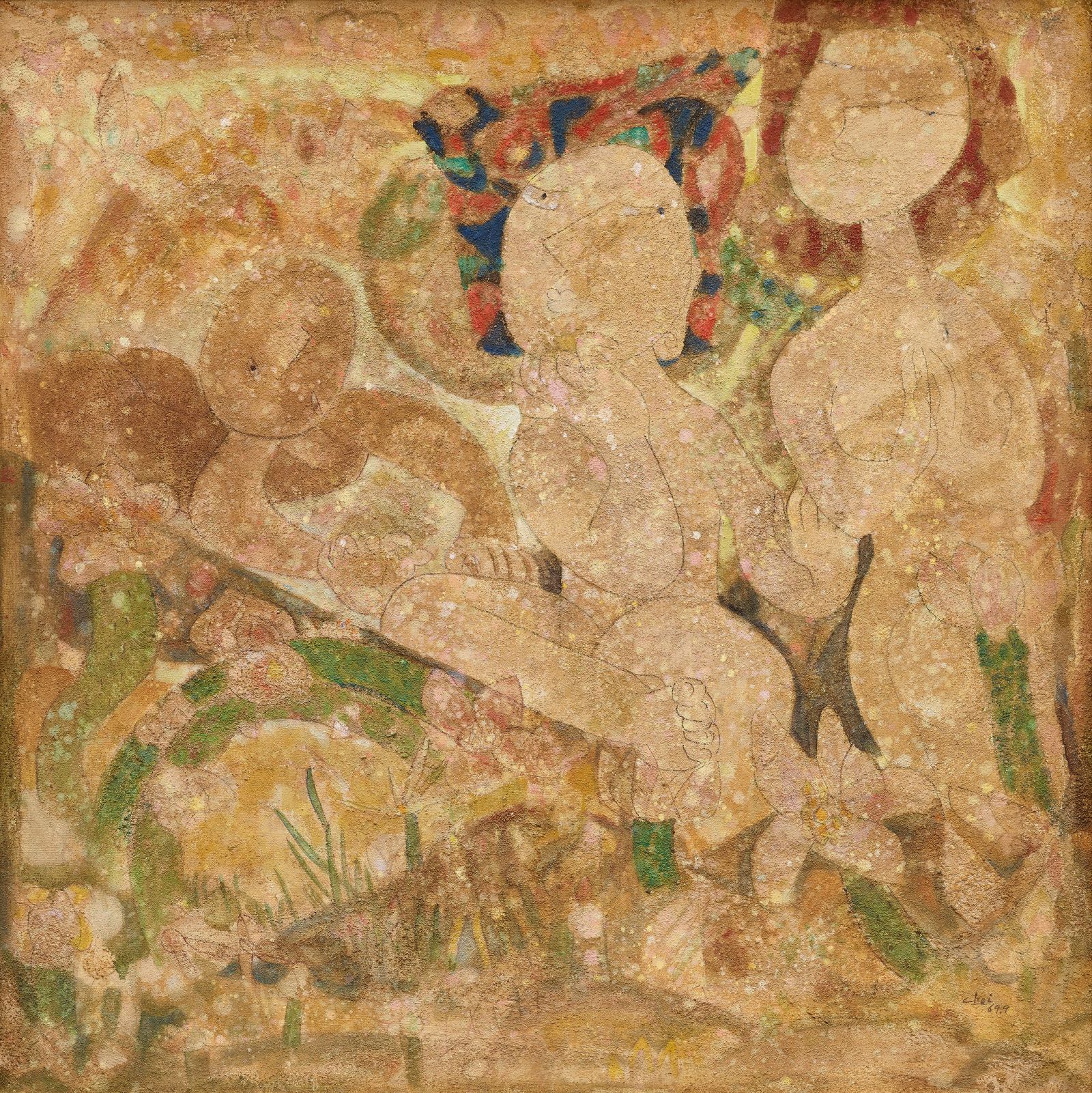
The First Korean Contemporary Prints Exhibition, Leaflet, 1968, Image provided by Kimdaljin Art Archives and Museum
Korean Contemporary Printmakers Association
* Source: Multilingual Glossary of Korean Art. Korea Arts Management Service
Related
-

Yoo Kangyul
Yoo Kangyul(1920-1976) was a Korean printmaker and dye craftsman who engaged in diverse activities from the late 1940s through the early 1960s. He entered the Azabu Middle School in Tokyo in 1933 and graduated from the Craft and Design Department at Nihon Art School in 1944. In 1941, while studying in Japan, Yoo’s work was selected for the Japanese Craftspeople Association Exhibition. He received apprenticeship education on dyeing at the Saito Craft Institute. After returning to Korea, Yoo worked as a principal lecturer and researcher at Lacquerware Inlaid with Mother-of-Pearl Training Center and Korean Plastic Arts and Culture Research Institute. In 1958, he received Rockefeller Foundation scholarship to study printmaking at New York University and the Pratt-Contemporaries Graphic Art Centre. He was later appointed as a professor at Hongik University and served until 1976. He was also active as an architectural advisor and interior designer. Among his notable works are the exhibition design for Anti-Communist Exhibition Hall of the Freedom Center (1966) and the Ceramic Mural for the National Assembly (1974). Yoo Kangyul founded the Korean Contemporary Printmaker Association [Hanguk hyeondae panhwaga hyeophoe] in 1968 to develop Korean printmaking. Moreover, he served as a judge of the Korean Art Grand Award Exhibition in 1969, a standing committee member for the construction of the National Museum of Korea in 1970, and a head judge for the National Tourist Folk Art Competition from 1971 to 1976. He won many awards including the Minister of Education Award (1953) and the Prime Minister Award (1954) at the National Art Exhibition (Gukjeon) and a presidential prize for the interior design of the National Museum of Korea (1970). Yoo did not hold a solo exhibition during his lifetime, but in 1978 Kyang Yul Yoo’s Exhibition was organized by his students and the National Museum of Modern Art, Korea (now MMCA). In 1981, Collection of Works by Yoo Kangyul was published. In 2000, his bereaved family donated Yoo’s collection to the MMCA and the National Museum of Korea.
-

Choi Youngrim
Choi Youngrim (1916-1985) was the first son of a wealthy Oriental medicine pharmacist in Pyongyang. He joined a small art community at Gwangseong High School in Pyongyang and submitted a print to the Japanese Print Association. An oil painting of his was selected for the Joseon Art Exhibition [Joseon misul jeollamhoe] in 1935 and several more were selected through 1943. After independence, he participated in the National Art Exhibition (Gukjeon), the Creative Art Association Exhibition, and the Figurative Art Exhibition, and taught as an art professor at the College of Fine arts at Chung-Ang University. He simplified and reconfigured geometric objects using black outlines and flat planar forms in the 1950s. In the 1960s, he switched to color painting, with motifs from traditional folklore, such as Shimchung or The Story of a Tiger, and developed a painting technique of colourful painting by spreading oil on the canvas. He depicted primitive and innocent Utopian landscapes using the simple shades of ochre, and a soft smearing texture, often featuring round and voluptuous nude figures within.







